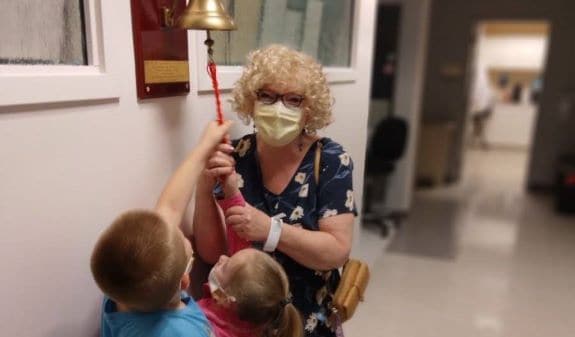
By Catherine Olivieri, senior vice president of human resources, Susan G. Komen
“It’s a matter of trust,” as Billy Joel famously sings. Sounds simple enough, but that sentiment is also the complex root of creating a fearless work culture.
Building culture and trust within an organization is year-round work. It’s not just a catchy tagline plastered on the side of a free water bottle. Instead, culture is gently tucked inside many small, vulnerable moments and interactions within a workforce. It’s an executive owning a mistake, a manager showing empathy, or an organization saying, “We have your back no matter what.”
Building a fearless culture also comes down to integrity and grace. The integrity to walk the walk, not just feed fancy words to a workforce; the grace to accept mistakes made at all levels of the organization; and the vulnerability to admit, “I’m just not my best self today.”
But herein lies a universal workplace problem. Too many employees are afraid or hesitant to share major life moments with their employers. A cancer diagnosis, a pregnancy, a wedding, even a resignation. Some fear they will be judged (or fired) for taking time off for treatment, parental leave or a honeymoon, or for not appearing as dedicated to their work. Others simply aren’t comfortable sharing their personal life with their colleagues.
In any case, there is a longstanding stigma and fear of vulnerability in the workplace we must eliminate to achieve a safe, meaningful culture.
STARTING AT THE TOP
We are human first, above all things. And at Susan G. Komen, our leaders make a point to share the good, the bad and the ugly alike. Many have gone through cancer treatment themselves, others have lost loved ones to the disease, and all of them have experienced the highs and lows of life. Whether health or home obstacles, when our leaders open the lines of communication during life’s most challenging moments, it not only allows employees to connect on a human level, but they also witness firsthand how the organization supports and embraces major life changes.
We also know well that the world outside the office doesn’t check itself at the door. What happens in our country daily—school shootings, hate crimes, natural disasters—is an extra weight employees carry into work every day. Communicating with teams during tragedy unites us under the umbrella of human experience. We share our sadness, our anger, our desperation and support for our people so they know that change of any kind is something we work through together—not something that is judged.
In fact, through Komen’s recent engagement survey, we were proud to learn that 91% of our employees feel their manager cares about their concerns. While there is always room for improvement, this data further proves what we knew all along: Ensuring our people feel seen and heard, and recognizing all forms of expression, is so important to the health of our organization.
NUMBERS ON PAPER
My former boss changed my mindset forever when he said: “I feel an enormous responsibility walking into our building every day. I have 20,000 people who rely on coming to work to support their families and do the things that allow them to live good lives.”
At a time when employees can feel like numbers on paper, this mentality grounds us in the human element so deeply. We didn’t just have 20,000 employees on paper; we had 20,000 people who depended on their job to create a healthy, sustainable and fulfilling life.
That’s a potent statement, I know. But it’s the mindset of many successful leaders who achieve authenticity and trust with their people.
In human resources especially, we are at times largely responsible for our employees’ well-being. For one, we provide health care benefits—but we surely cannot control every single detail of health care and insurance. What we can control is empowering and educating our employees on how they can take full advantage of their benefits. Again, people are more than policies on paper, and we strive to serve as their ally in navigating complex systems and life transitions.
RESPECTING BOUNDARIES
One hard lesson I learned years ago was: There is no one-size-fits-all approach to healing.
I was working with one of my best friends who had just received a terminal cancer diagnosis. And she was still showing up to work every day. I remember telling her, “I’m going to help you. Get out of the office, go enjoy the outdoors, don’t worry about work anymore.” That’s what I would’ve wanted, I thought.
She refused. For her, work created normalcy, and normalcy made her feel better. In these moments, many of us learn that what makes us feel better is not always the right antidote for everyone else.
Of course, any life-threatening event causes people to step back and re-prioritize. As an employer, our job is to help them navigate those changes—not interfere.
SLOW BUILD, BIG PAYOFF
Like many a Christopher Nolan film, building a fearless culture is a slow burn—but always worth the payoff. It’s not a big bang moment or a punchy tagline. A fearless culture is woven throughout every authentic interaction with leadership. It’s the energy you feel in company town halls, the supportive tone in a manager’s voice and the friendships nurtured on a daily basis.
A fearless culture builds upon itself over time, so when crises arise, as they do for us all, employees know their organization is a pillar of support—not another barrier.
—-



